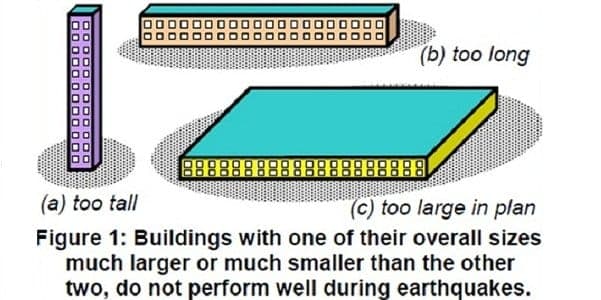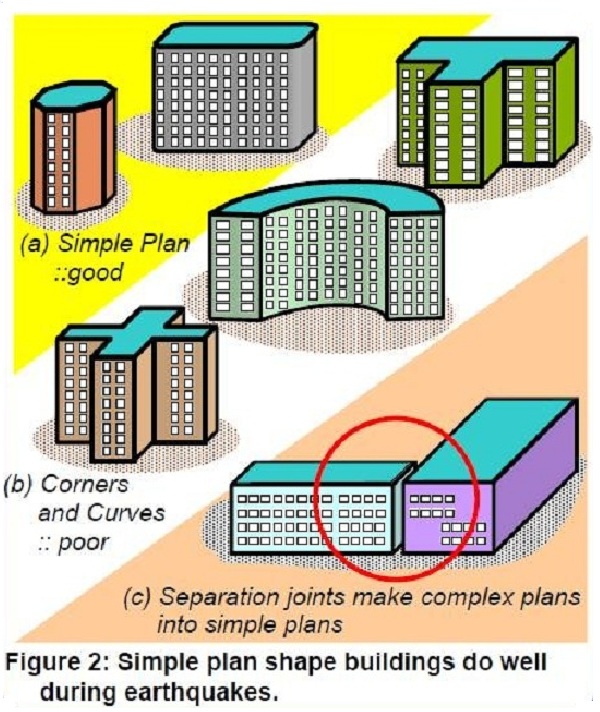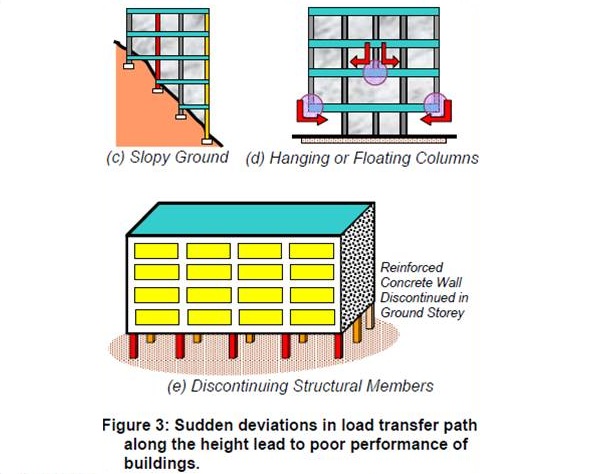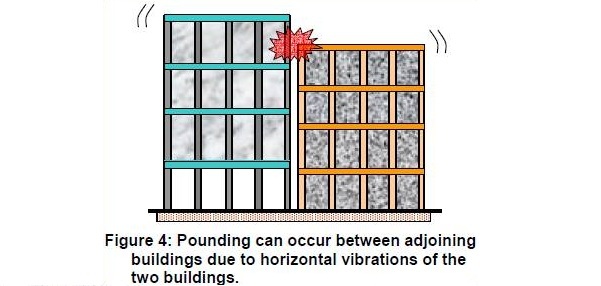
In past, wide range of structural damages was observed during earthquakes across the world. These are not desirable structural configurations, which must be avoided.
Size of Building
- Figure 1a shows tall buildings with large height to base size ratio. In that case, the horizontal movement of the floors during ground shaking is large.
- Figure 1b shows short but very long buildings. In that case, the damaging effects during earthquake shaking are many.
- Figure 1c shows buildings with large plan area like warehouses. In that case, the horizontal seismic forces can be excessive to be carried by columns and walls.
Horizontal Layout of Building
- Figure 2a shows buildings with simple geometry in plan will perform well during strong earthquakes.
- Figure 2b shows buildings with re-entrant corners shaped in plan have sustained significant damage during earthquake. For example, U, V, H and +.
- Figure 2c shows the bad effects of interior corners in the plan of buildings. These can be avoided by making the buildings in two parts.
- The columns/walls are not equally distributed in building tend to twist during earthquake shaking.

Vertical Layout of Building
- The earthquake forces developed at different floor levels in a building need to be brought down along the height to the ground.
- Any deviation or discontinuity in this load transfer path results in poor performance of the building.
- Figure 3a shows buildings with vertical setbacks, which cause a sudden jump in earthquake forces at the level of discontinuity.
- Figure 3b shows buildings that have fewer columns or walls in a particular storey or with unusually tall storey tend to damage or collapse.
- The buildings with an open ground storey intended for parking collapsed or were severely damaged in Gujarat during the 2001 Bhuj earthquake. Figure 3c shows buildings on sloppy ground have unequal height columns along the slope. It causes ill effects like twisting and damage in shorter columns.
- Figure 3d shows buildings with columns that hang or float on beams at an intermediate storey and do not go all the way to the foundation. It creates discontinuities in the load transfer path.
- Figure 3e shows buildings, in which reinforced concrete walls do not go all the way to the ground but stop at an upper level. These walls are liable to get severely damaged during earthquakes.


Adjacency of Building
- When the two buildings are too close to each other, it may pound on each other during strong shaking. With increase in building height, this collision can be a greater problem.
- When the two building heights do not match, the roof of the shorter building may pound at the mid-height of the column of the taller one. This is very dangerous. (See Figure 4)

In sort
- Architectural features that are detrimental to earthquake response of buildings should be avoided or minimized.
- When irregular building features are included, a considerably higher level of engineering effort is required in the structural design. Even after doing so the building may not be as good as one with simple architectural features.
- Decisions made at the planning stage on building configuration are more important.
Courtesy – IIT Kharagpur






























